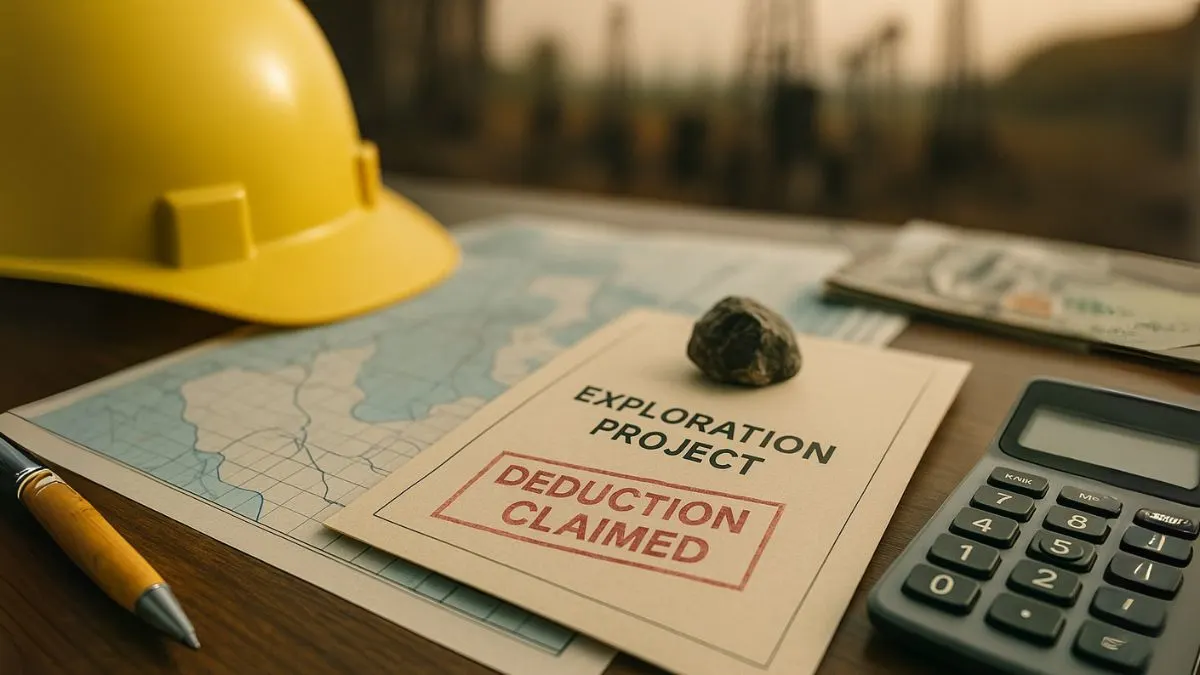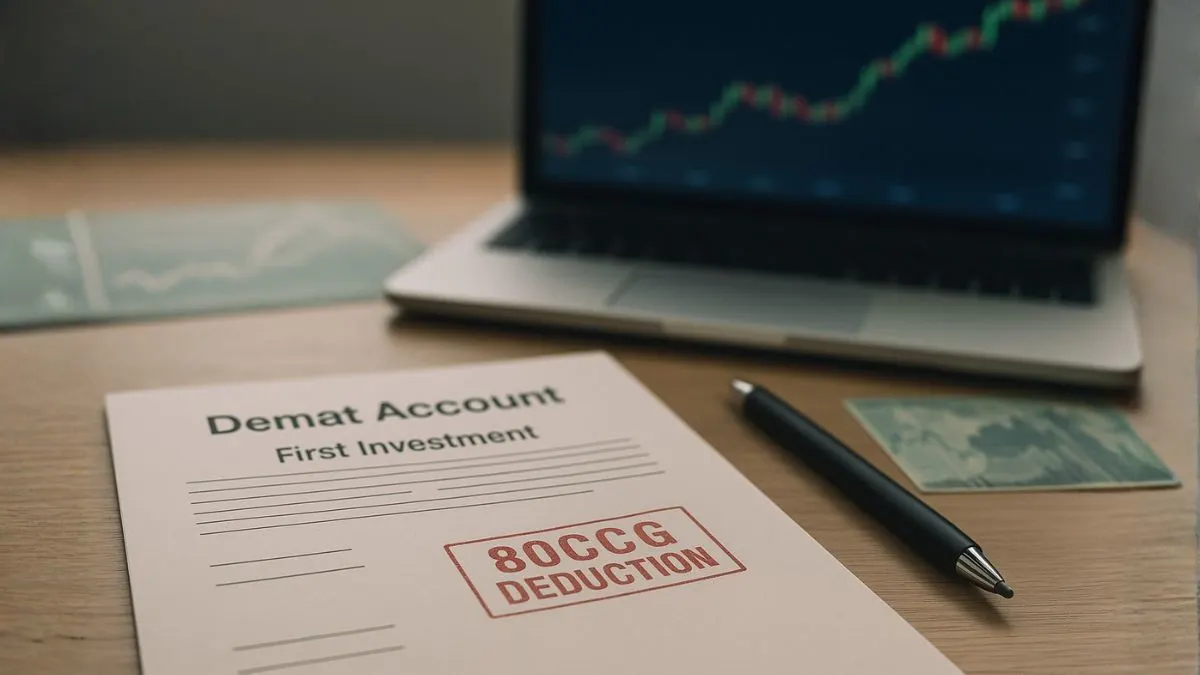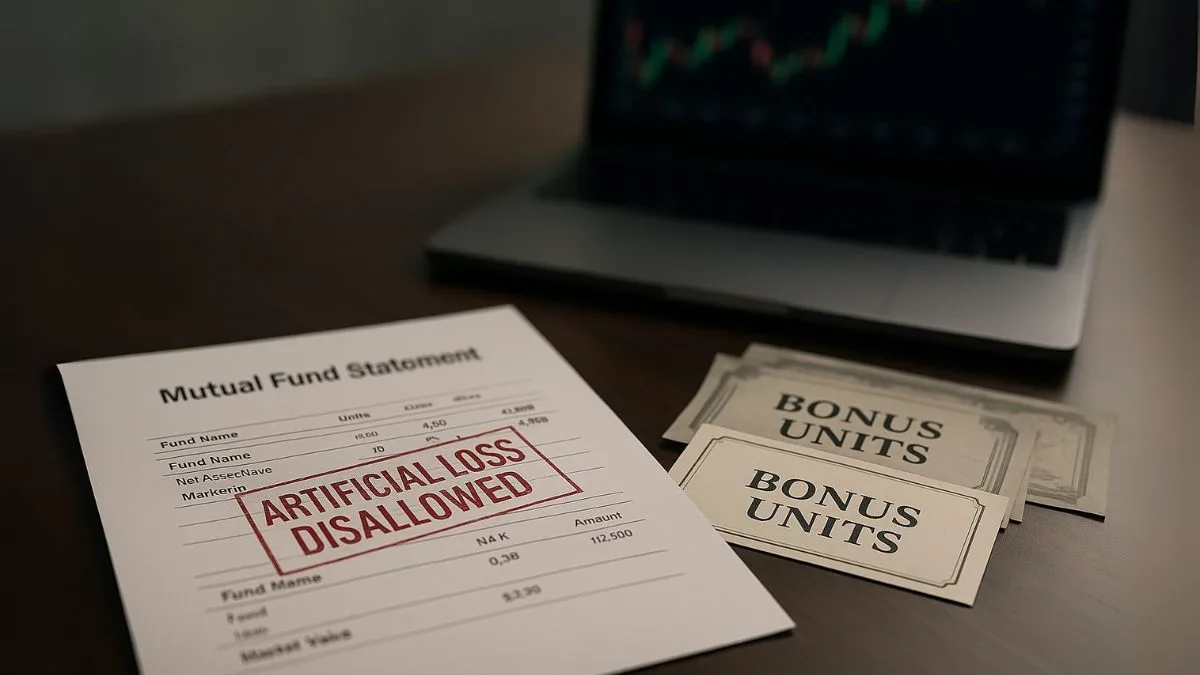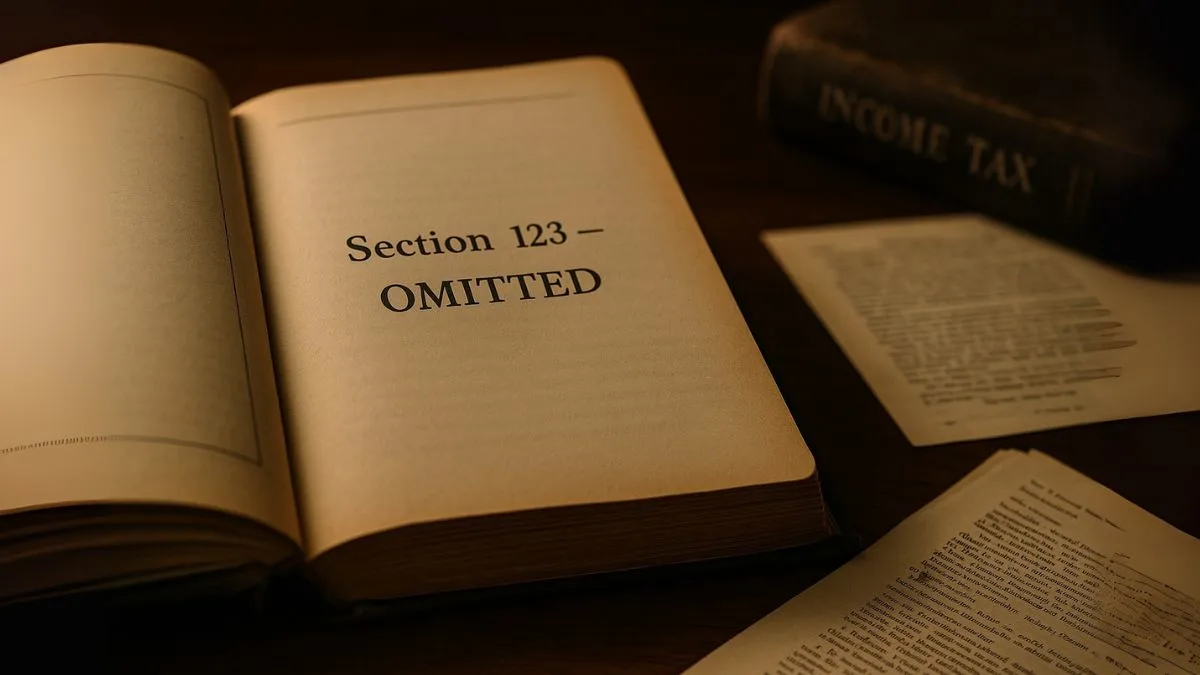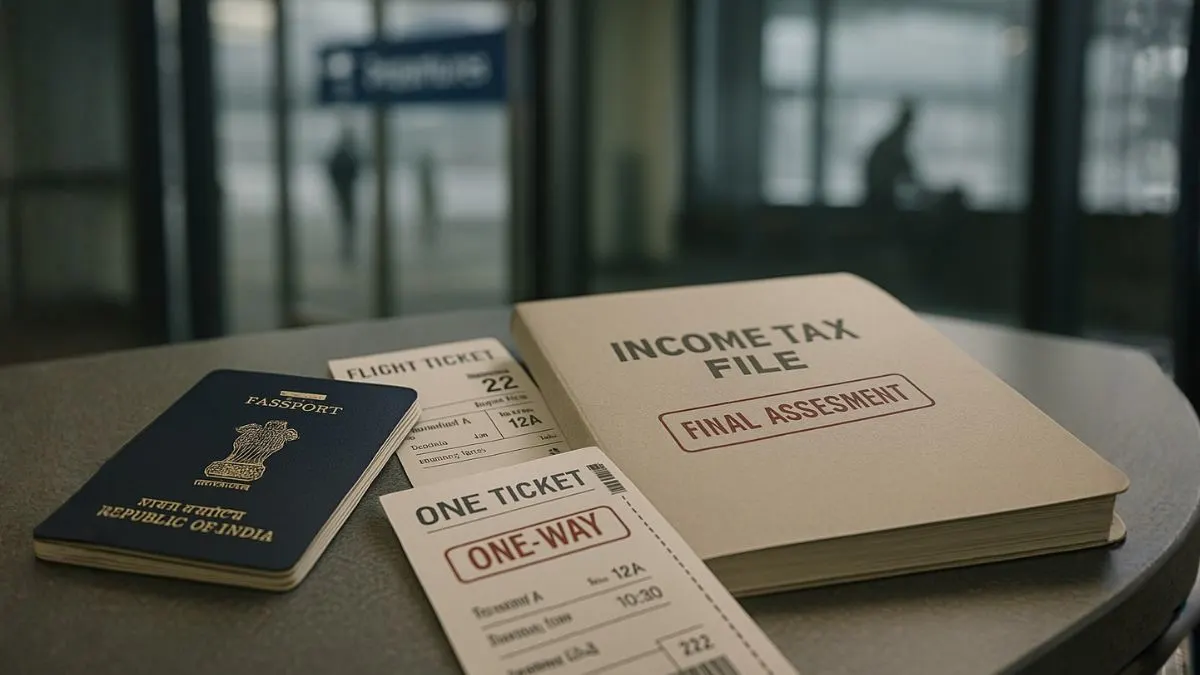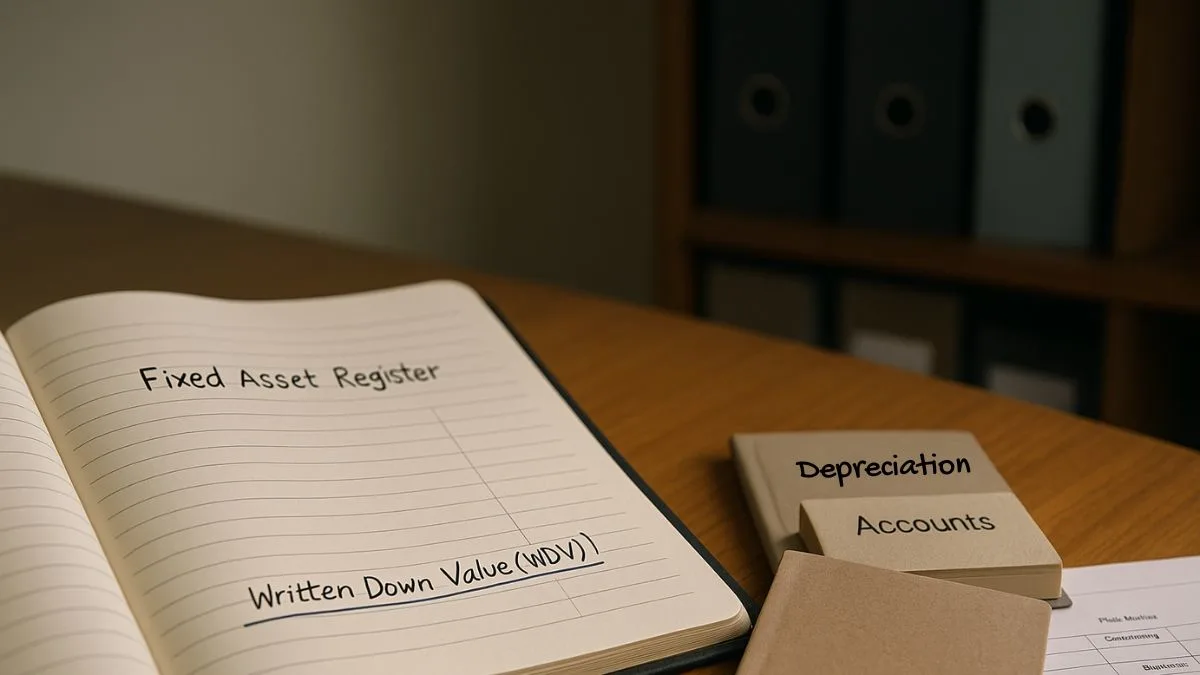
In taxation, depreciation isn’t just about wear and tear — it’s about recognizing how assets lose value over time. The Income Tax Act, 1961 provides a detailed framework for this through several sections, and among the most important is Section 43(6).
This section defines how to determine the Written Down Value (WDV) of a capital asset — that is, how much of an asset’s value remains after accounting for depreciation. It’s the foundation for calculating depreciation claims and for determining capital gains or losses when assets are sold.
Whether you’re a business owner, accountant, or tax consultant, understanding this section is essential for accurate tax computation and compliance.
What Is Section 43(6) of Income Tax Act?
Section 43(6) defines the term Written Down Value (WDV) — the value of an asset or a block of assets after reducing the depreciation already claimed.
It’s a key figure used while computing taxable income from business or profession.
“The actual cost of an asset to the assessee, less all depreciation actually allowed to him under this Act or any earlier law.”
In simpler terms:
After claiming depreciation every year, the remaining book value of the asset becomes its WDV.
This Written Down Value is then used to calculate:
- Depreciation for subsequent years, and"
- Gains or losses when the asset is sold.
Purpose of Section 43(6)
The main purpose of this section is to standardize how businesses calculate depreciation and maintain consistency in tax valuation.
It ensures that depreciation and asset valuation are uniform, transparent, and free from manipulation.
This section is crucial for:
- Determining depreciation for the current year
- Calculating gain or loss on sale of assets
- Maintaining blocks of assets for depreciation purposes
In short, Section 43(6) keeps both taxpayers and tax authorities aligned with one clear method of asset valuation.
Also Read: Deductions Allowed Only on Actual Payment Basis
Actual Cost and Depreciation — The Two Pillars
Before diving deeper, let’s clarify two key terms central to this section:
- Actual Cost
This refers to the real purchase cost of the asset, including expenses like freight, installation, and testing that make the asset ready for use.
- Depreciation
This is the reduction in value of an asset over time due to usage or age.
Under the Income Tax Act, depreciation is computed using the WDV method, with specific rates prescribed for different asset categories.
When you subtract accumulated depreciation from actual cost, the balance is your Written Down Value (WDV) under Section 43(6).
Key Provision – Deduction of Notional Depreciation
One of the unique features of this section is that it deducts notional depreciation — even if depreciation wasn’t actually claimed in earlier years.
This means that even if the assessee didn’t claim depreciation, the tax law assumes it was claimed and reduces it from the cost while calculating the WDV."
✅ Example:
A machine was purchased for ₹10,00,000 five years ago. The total depreciation allowed over time is ₹4,00,000.
Even if the taxpayer didn’t claim depreciation in one or more years, the WDV will still be ₹6,00,000.
This clause ensures fairness and prevents taxpayers from skipping depreciation earlier to claim a higher deduction later.
Assets Acquired Before the Previous Year
If assets were acquired before the current financial year, the Written Down Value is computed as:
Actual cost – Total depreciation allowed up to the beginning of the current year
📘 Example:
If you purchased an asset in FY 2021–22 and are calculating WDV for FY 2024–25, reduce all depreciation allowed between 2021 and 2024 from the original cost to arrive at the current year’s WDV.
This ensures continuity in asset valuation across multiple years.
Also Read: Section 43 of Income Tax Act: Definitions, Valuation, and Business Tax Implications
Block of Assets Concept
To make things simpler, the Income Tax Act uses the block of assets system instead of calculating depreciation asset by asset.
Under this system, assets of the same nature and same depreciation rate are grouped together as one block.
Section 43(6) defines how to compute the Written Down Value of a block of assets, ensuring consistency.
Calculation steps:
- Take the opening WDV of the block (from the previous year)
- Add the actual cost of new assets acquired during the year
- Deduct the sale value or insurance money received for assets sold
- The remaining balance is the closing WDV
This closing WDV becomes the opening value for the next year.
Example:
|
Particulars |
Amount (₹) |
|
Opening WDV of Machinery Block |
10,00,000 |
|
Add: New machinery purchased |
5,00,000 |
|
Less: Machinery sold |
3,00,000 |
|
Closing WDV |
12,00,000 |
Depreciation for the next year will be calculated on ₹12,00,000 at the prescribed rate.
If no asset remains in the block, the balance amount is treated as short-term capital gain or loss.
Section 43(6)(c) – When Assets Are Sold or Disposed
Clause 43(6)(c) deals specifically with adjustments to WDV when assets are sold, demolished, discarded, or destroyed.
It provides that:
The WDV shall be reduced by the money payable (like sale value or insurance proceeds) for such assets.
If all assets in a block are sold, the remaining balance is treated as:
- Short-term capital gain, if sale value > WDV
- Short-term capital loss, if sale value < WDV
This ensures depreciation is only allowed on assets that still exist in the business.
Also Read: Special Provision for Full Value of Consideration for Transfer of Assets
Section 43(6)(c)(i)(c) – Special Cases (Mergers & Transfers)
Sub-clause 43(6)(c)(i)(c) clarifies how to compute WDV during:
- Business reorganizations,
- Mergers or demergers, and
- Succession by inheritance
In these cases, the WDV in the successor’s hands is the same as in the predecessor’s hands.
This prevents misuse of revaluation or artificial cost inflation and keeps tax treatment consistent.
Why WDV Matters
The Written Down Value affects several critical areas of tax computation:
- 💼 Depreciation Deduction – determines how much you can deduct each year
- 💰 Capital Gains – affects profit/loss when selling assets
- 📑 Compliance – ensures transparency and uniform asset valuation
That’s why Section 43(6) is often called the backbone of depreciation accounting in the Income Tax framework.
Practical Implications for Businesses
For New Businesses
Start by classifying every asset into proper blocks to make depreciation calculation simpler and compliant.
For Established Businesses
Maintain detailed records of all asset additions and disposals. Even if depreciation wasn’t claimed earlier, notional depreciation will still reduce WDV.
Before Selling Assets
Always compute the WDV first to know the capital gains or losses impact on taxation.
Judicial Interpretations
Indian courts have consistently emphasized that depreciation must be deducted — whether or not it was claimed.
- CIT v. Alps Theatre (1967): The Supreme Court held that depreciation once allowed cannot be ignored later.
- CIT v. Bharat Earth Movers (2000): The Court reaffirmed that WDV ensures fairness by reflecting real asset value over time.
Also Read: MSME Payment Rule Every Business Must Know
Relation with Other Sections
- Section 32: Specifies depreciation rates and eligible assets
- Section 43(1): Defines actual cost of assets
- Section 50: Uses WDV to compute short-term capital gains on depreciable assets
Together, these create a complete depreciation framework under the Income Tax Act.
Key Takeaways
- Section 43(6) governs Written Down Value (WDV) and defines how to calculate it
- Focuses on blocks of assets, not individual ones
- Notional depreciation ensures consistency even if unclaimed
- Considers actual cost of older assets for continuity
- Sub-clause 43(6)(c)(i)(c) deals with mergers, successions, and reorganizations
- WDV directly affects depreciation, capital gains, and compliance accuracy
Conclusion
In short, Section 43(6) of Income Tax Act provides the foundation of asset valuation and depreciation under Indian tax law. It ensures that every asset’s value is calculated fairly, avoiding inflated deductions or understated profits. From new start-ups to large corporations, this section maintains transparency, consistency, and accountability.
For entrepreneurs, accountants, and CAs, mastering this section is crucial for efficient tax management and error-free compliance.
Confused about how to compute depreciation or calculate the correct WDV for your business assets?
👉 Visit CallMyCA.com — our expert Chartered Accountants will help you assess your Written Down Value accurately, optimize your depreciation claims, and keep your financial records audit-ready all year round.

